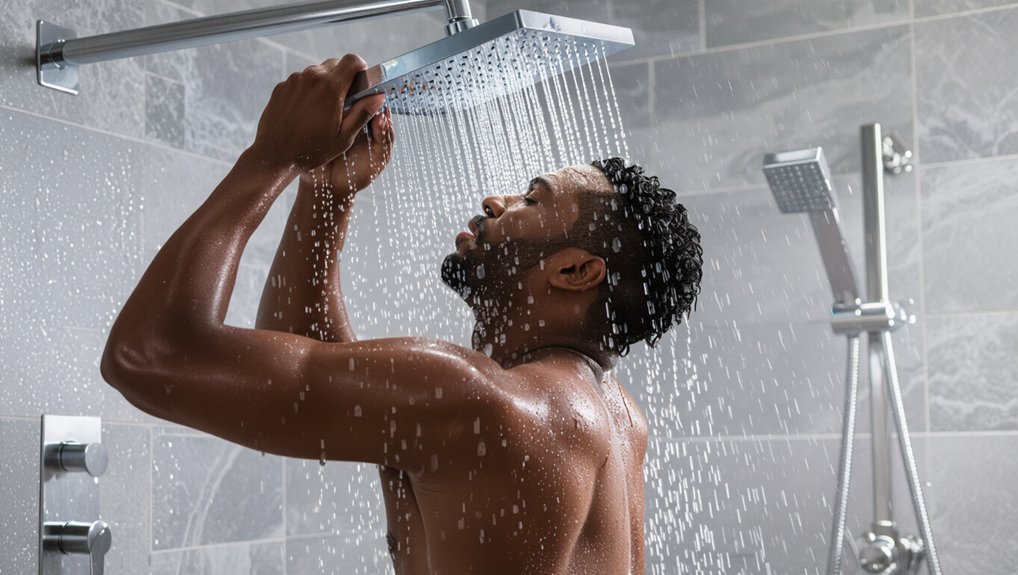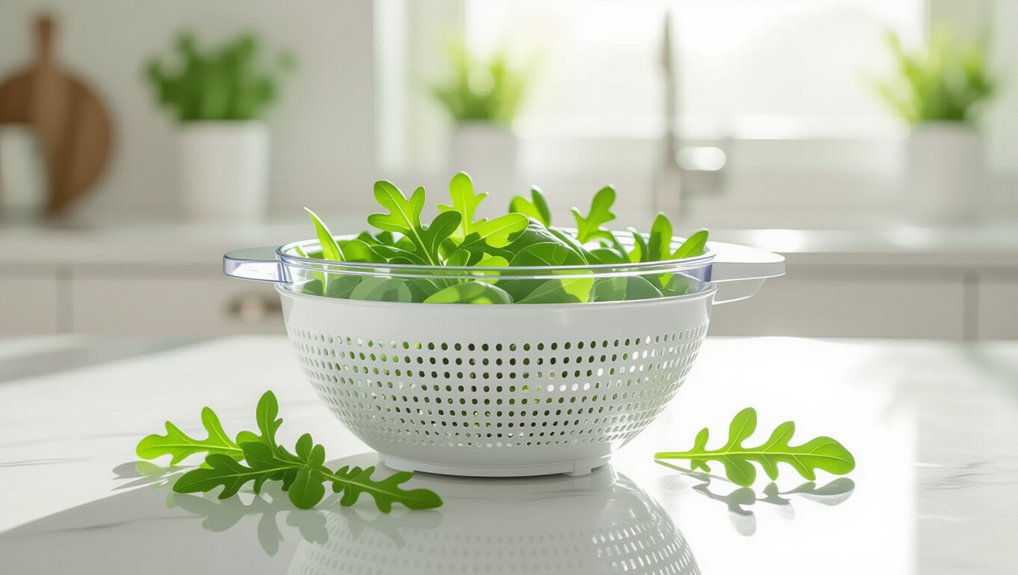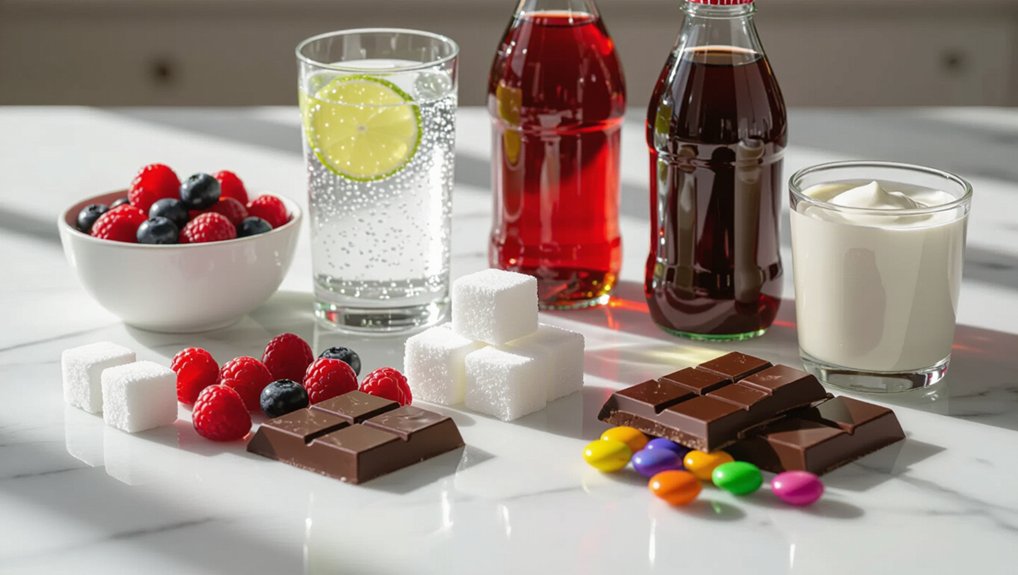You’ve probably heard conflicting opinions about cold showers – some people swear by them while others can’t imagine starting their day with anything but hot water. The truth is, there’s substantial science backing the benefits of cold exposure, from boosting your immune system to improving mental resilience. But before you jump into freezing water tomorrow morning, you’ll need to understand the proper approach to avoid common pitfalls that could derail your efforts entirely.
The Science Behind Cold Water Exposure
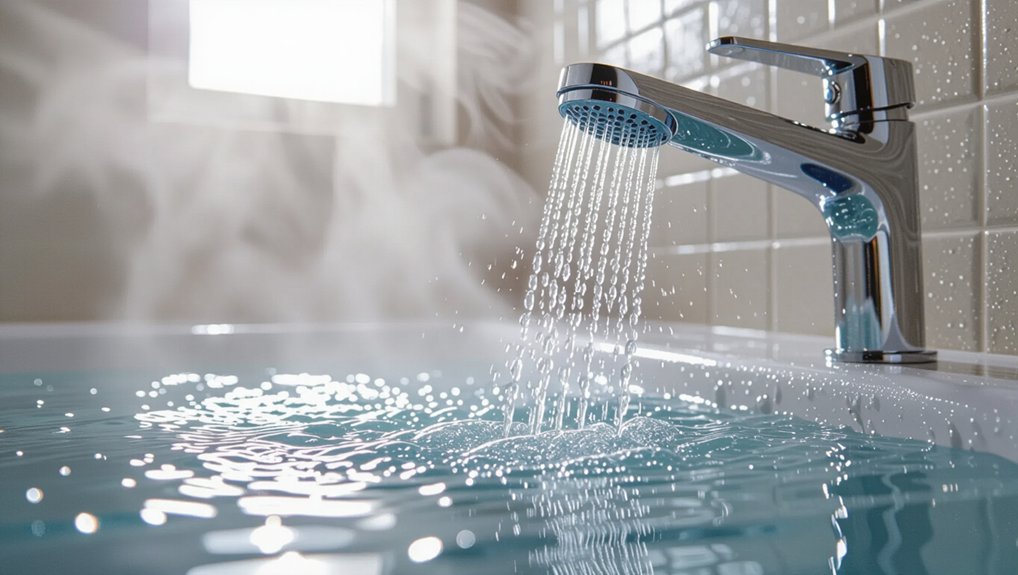
When you step into a cold shower, your body immediately triggers a cascade of physiological responses designed to maintain core temperature and ensure survival.
Your sympathetic nervous system activates, releasing norepinephrine and adrenaline into your bloodstream. This hormonal surge increases your heart rate, constricts blood vessels near your skin’s surface, and redirects blood flow to vital organs.
Your metabolism accelerates as brown adipose tissue burns calories to generate heat through thermogenesis.
Meanwhile, your breathing deepens and becomes more controlled as your body adapts to the stress. Cold exposure also stimulates the vagus nerve, which helps regulate your parasympathetic nervous system and influences mood, inflammation, and immune function.
These interconnected responses create the foundation for cold therapy’s documented health benefits.
Physical Health Benefits of Cold Showers
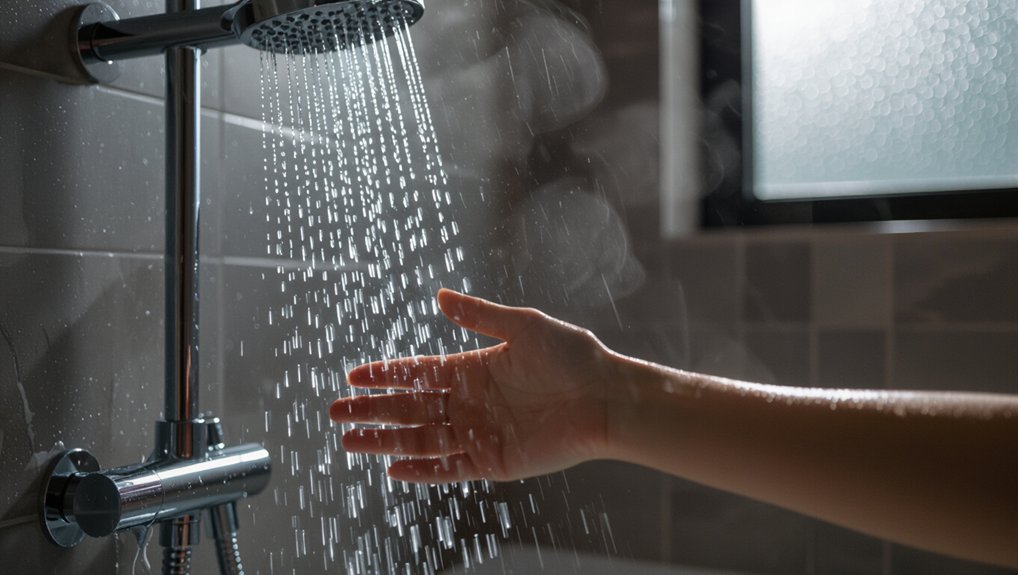
While the immediate shock of cold water might feel uncomfortable, the physical health benefits you’ll gain make this temporary discomfort worthwhile.
Cold showers boost your circulation by forcing blood vessels to constrict and then dilate, improving cardiovascular health. You’ll experience enhanced muscle recovery as cold water reduces inflammation and speeds healing after workouts.
Your immune system gets stronger too – regular cold exposure increases white blood cell production, helping you fight off infections more effectively. Cold water also accelerates your metabolism, potentially aiding weight management by activating brown fat cells that burn calories for heat.
Additionally, you’ll notice improved skin and hair health since cold water tightens pores and cuticles, reducing oiliness while adding natural shine.
Mental Health and Cognitive Advantages
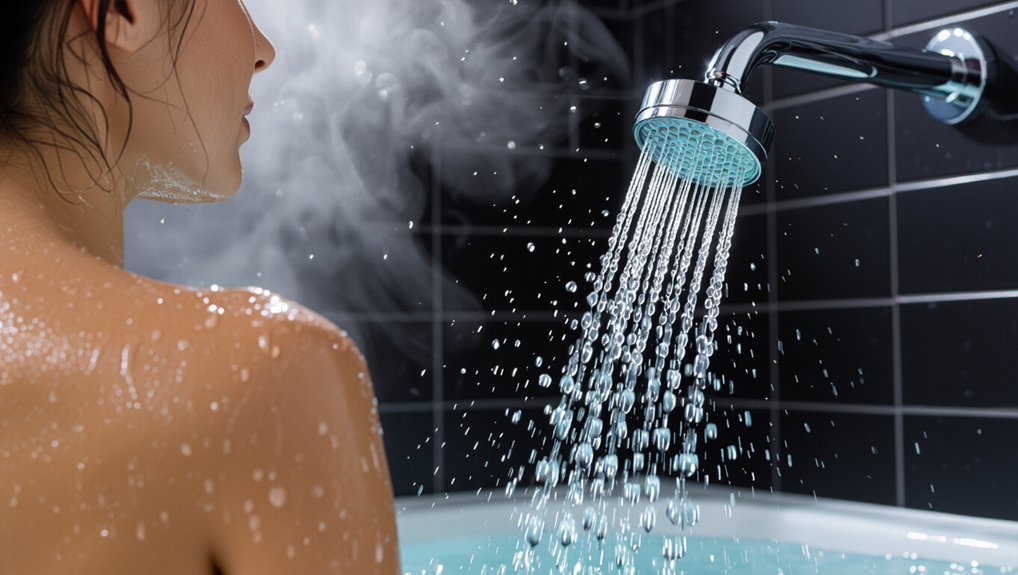
Beyond the physical improvements, cold showers deliver remarkable mental health benefits that can transform your daily mindset.
You’ll experience a natural mood boost as cold water triggers endorphin release, creating feelings of euphoria similar to a runner’s high. This practice strengthens your mental resilience by forcing you to overcome discomfort, building confidence that carries into other life challenges.
Cold exposure sharpens your focus and alertness by activating your sympathetic nervous system, flooding your brain with norepinephrine.
You’ll notice improved concentration and mental clarity that lasts hours after your shower. Regular cold showers also reduce stress and anxiety levels while enhancing your ability to handle pressure.
This daily practice becomes a powerful tool for developing mental toughness and emotional regulation.
Impact on Metabolism and Weight Management
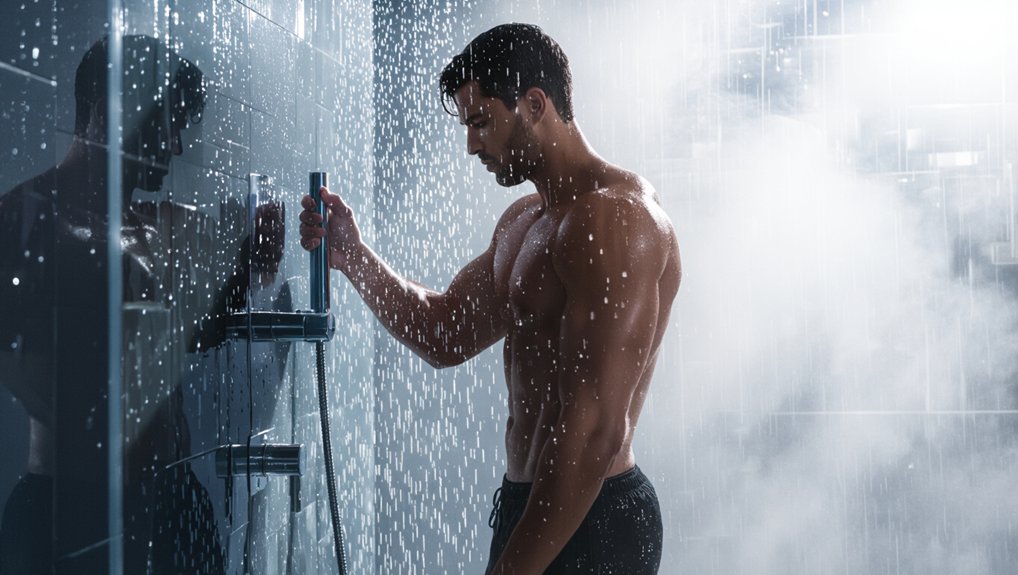
Cold showers activate your body’s thermogenic response, forcing it to burn calories at an accelerated rate to maintain core temperature.
This process can boost your metabolic rate by 15-20% for several hours after exposure.
You’ll stimulate brown adipose tissue (brown fat), which burns calories to generate heat rather than storing energy like white fat.
Regular cold exposure increases brown fat production, creating a more efficient calorie-burning system even at rest.
Cold showers trigger norepinephrine release, which enhances fat breakdown and improves insulin sensitivity.
This hormonal response helps your body utilize stored fat more effectively for energy.
While cold showers won’t replace proper diet and exercise, they can complement your weight management efforts by increasing daily calorie expenditure and improving metabolic efficiency over time.
Cold Therapy for Athletic Recovery and Performance
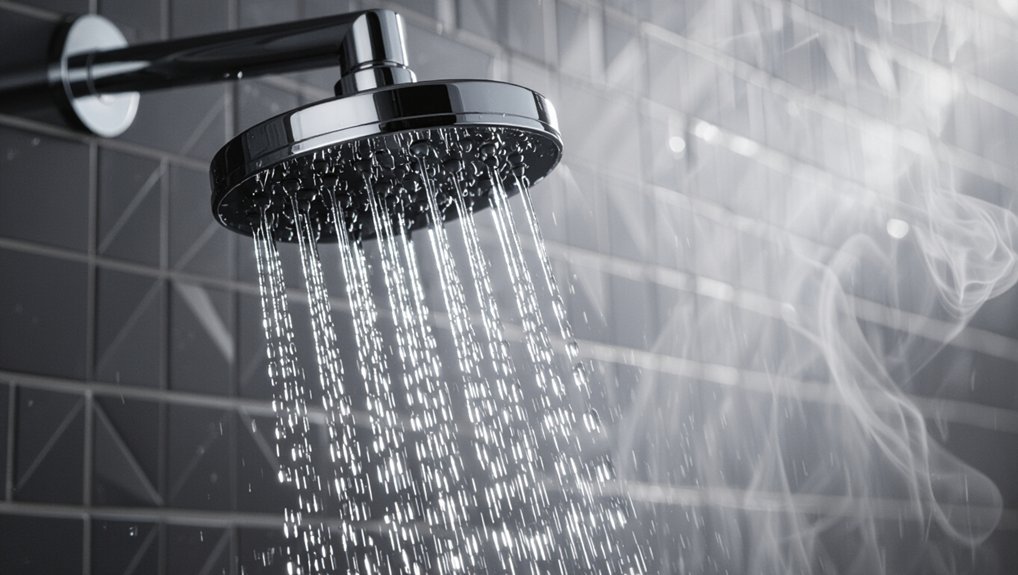
Athletes have long recognized the power of cold exposure to accelerate recovery and enhance performance. When you take cold showers after intense workouts, you’ll reduce muscle inflammation and soreness significantly.
The cold water constricts blood vessels, limiting inflammatory responses that can prolong recovery time. You’ll notice improved muscle repair when you incorporate cold therapy into your routine.
Cold exposure triggers the release of norepinephrine, which enhances focus and alertness during training sessions. Studies show that athletes who use cold therapy recover 25% faster than those who don’t.
Cold showers also increase your pain tolerance and mental resilience, giving you a competitive edge. You’ll develop better stress adaptation, allowing you to push harder during workouts while maintaining optimal recovery between training sessions.
Immune System Strengthening Effects
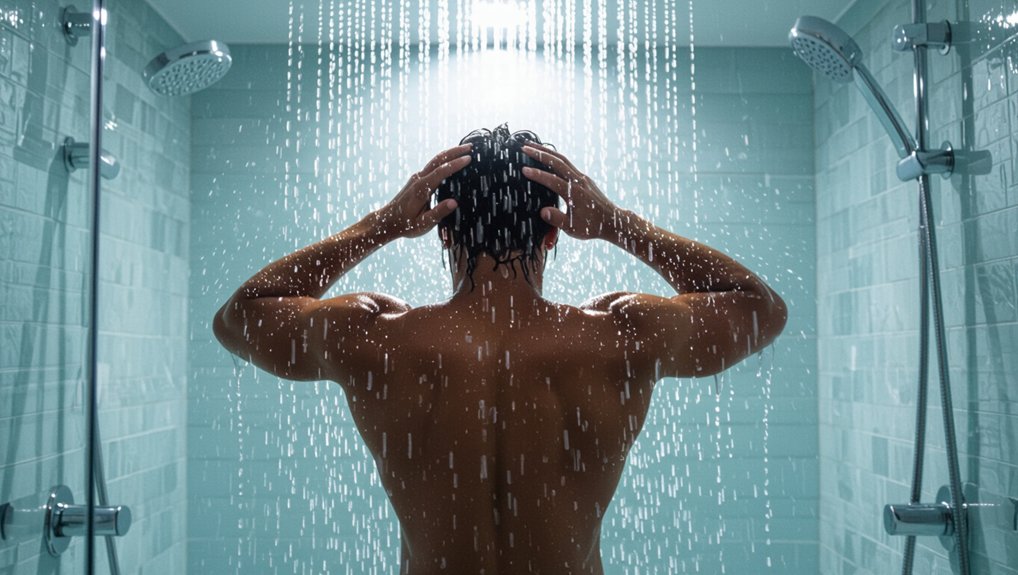
Your body’s defense mechanisms receive a powerful boost when you regularly expose yourself to cold water.
Cold showers trigger your sympathetic nervous system, increasing white blood cell production and enhancing your immune response. Research shows that people who take cold showers experience 29% fewer sick days compared to those taking warm showers.
The cold stress activates noradrenaline release, which stimulates immune cell activity and improves their circulation throughout your body.
You’ll also increase production of glutathione, a powerful antioxidant that protects cells from damage. Regular cold exposure helps your body adapt to stressors more effectively, creating a stronger overall immune system.
Start with 30-second cold bursts at the end of your regular shower to begin strengthening these protective benefits.
Step-by-Step Guide to Starting Cold Showers
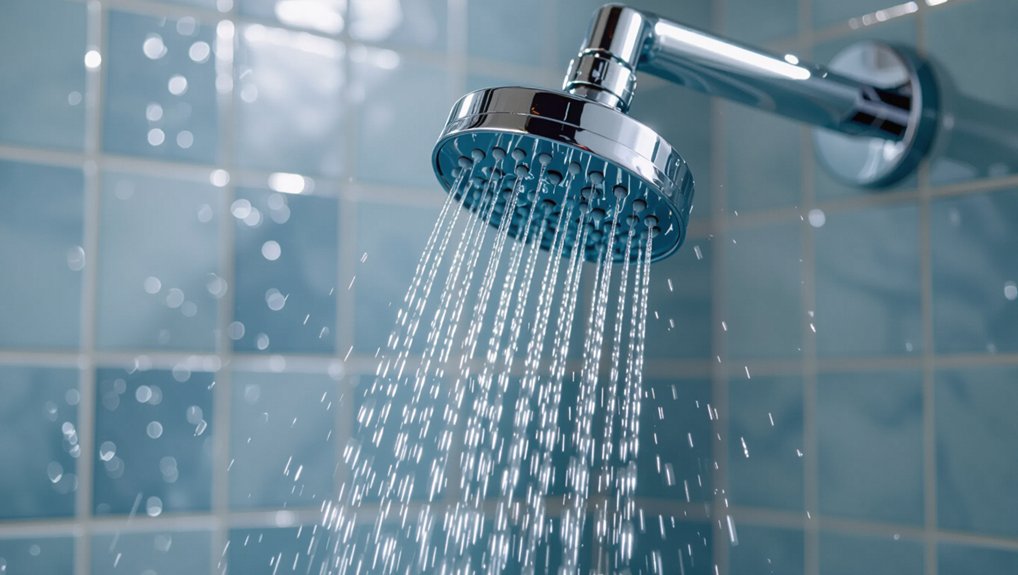
Beginning your cold shower journey requires a gradual approach that won’t shock your system into retreat. Start with your regular warm shower, then reduce the temperature for the final 30 seconds. You’ll feel uncomfortable, but breathe deeply and stay focused.
Week two, extend cold exposure to one minute. By week three, aim for two minutes of cold water. Don’t rush this progression – your body needs time to adapt.
When the cold hits, resist the urge to tense up. Instead, take slow, controlled breaths and relax your shoulders. Focus on exhaling slowly to manage the initial shock.
Once you’ve built tolerance, you can start with lukewarm water and gradually decrease temperature throughout your shower. This method helps you ease into longer cold exposures naturally.
Common Mistakes to Avoid When Beginning
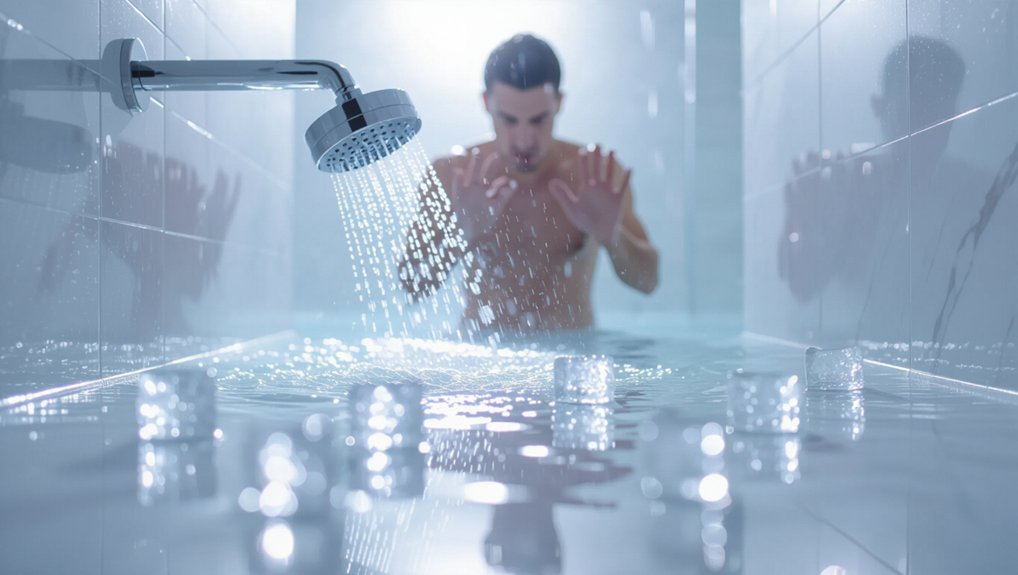
While following a structured approach sets you up for success, many newcomers sabotage their progress by making preventable errors.
Don’t jump into freezing water immediately – this shock can cause hyperventilation or injury. Avoid staying under cold water too long initially; start with 30 seconds and gradually increase duration.
You shouldn’t force yourself through unbearable discomfort that leads to quitting entirely. Don’t take cold showers when you’re already stressed, sick, or have heart conditions without consulting your doctor first.
Avoid inconsistency – sporadic attempts won’t build tolerance effectively.
Don’t neglect proper breathing techniques, as controlled breathing prevents panic responses.
Finally, don’t compare your progress to others; everyone adapts differently. Focus on gradual improvement rather than dramatic changes.
Who Should Exercise Caution With Cold Exposure
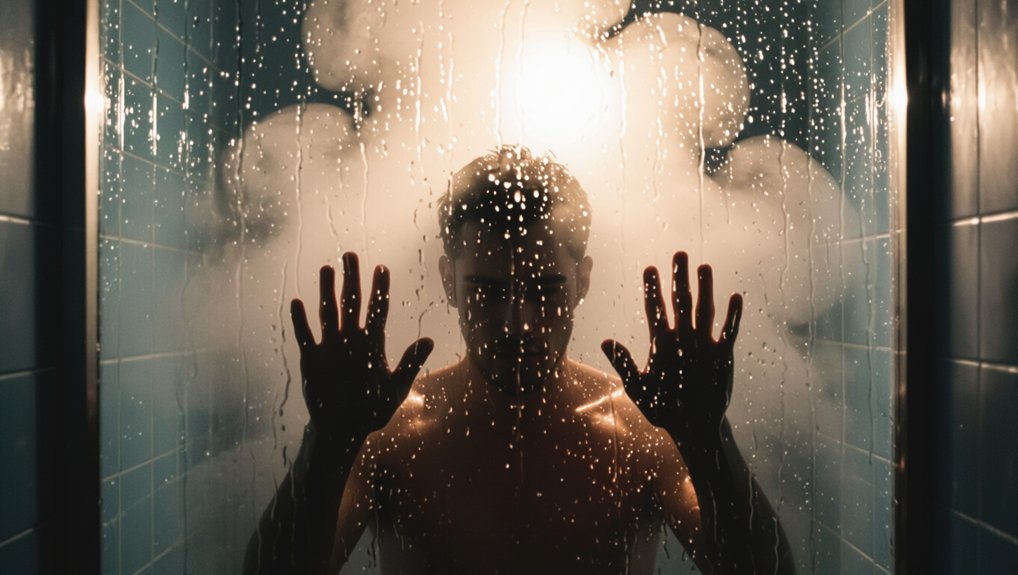
Although cold showers offer numerous benefits, certain individuals face increased risks and should proceed with extra caution or avoid cold exposure entirely.
If you have cardiovascular conditions like heart disease, high blood pressure, or arrhythmias, the sudden shock can trigger dangerous responses. Those with autoimmune disorders, thyroid dysfunction, or compromised immune systems shouldn’t risk additional stress on their bodies.
Pregnant women should avoid cold exposure due to potential circulation changes affecting the baby.
If you’re taking medications for blood pressure, heart conditions, or mental health, consult your doctor first, as cold exposure can interfere with these treatments.
People with eating disorders, extreme anxiety, or panic disorders may find cold showers worsen their symptoms.
Always prioritize your safety over potential benefits.
Making Cold Showers a Sustainable Daily Habit
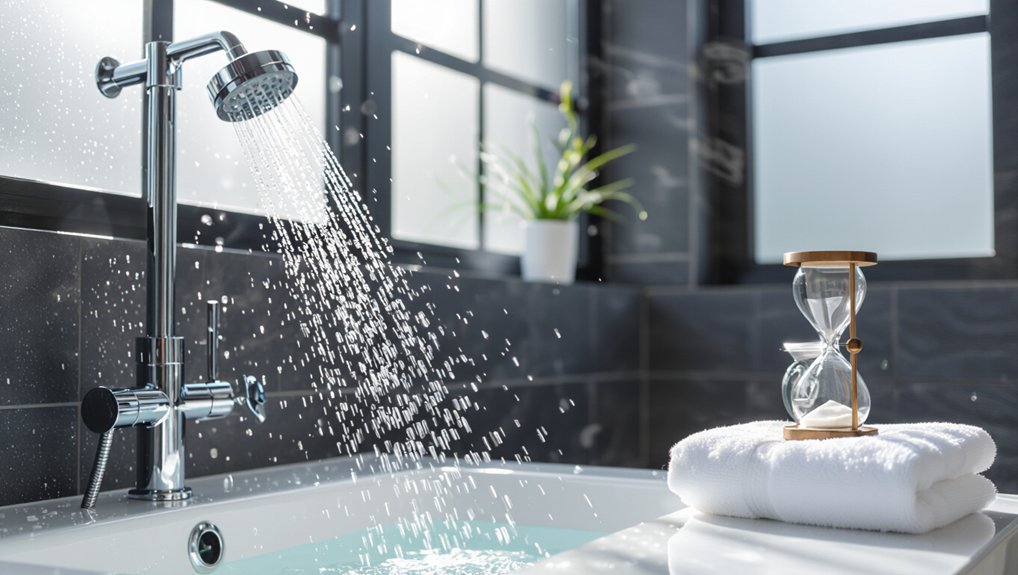
Once you’ve determined cold showers are safe for you, success depends on creating a routine that feels manageable rather than torturous.
Start with lukewarm water and gradually decrease temperature over several weeks. Begin with just 30 seconds of cold exposure at the end of your regular shower, then slowly increase duration as your tolerance builds.
Set a consistent time each day—many find mornings work best for the energizing effects.
Use breathing techniques to stay calm during the cold exposure. Focus on slow, controlled breaths rather than gasping or hyperventilating.
Track your progress in a journal or app to maintain motivation. Remember that adaptation takes time—your body needs weeks to adjust physiologically.
Don’t rush the process or you’ll likely abandon the habit altogether.
Conclusion
You’ve discovered that cold showers can transform your physical and mental well-being through improved circulation, enhanced mood, and increased resilience. Start gradually with lukewarm water, then progressively decrease the temperature over time. Begin with just 30 seconds of cold exposure at your shower’s end. Remember, consistency beats intensity – you’ll build tolerance naturally. Listen to your body, avoid common beginner mistakes, and you’ll establish this powerful wellness practice as a sustainable daily habit.
